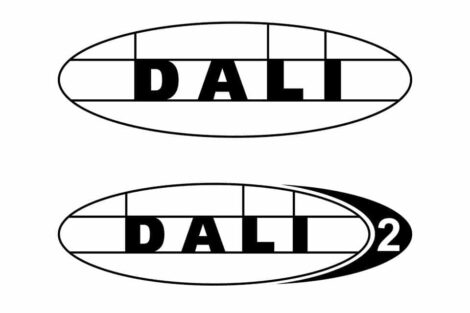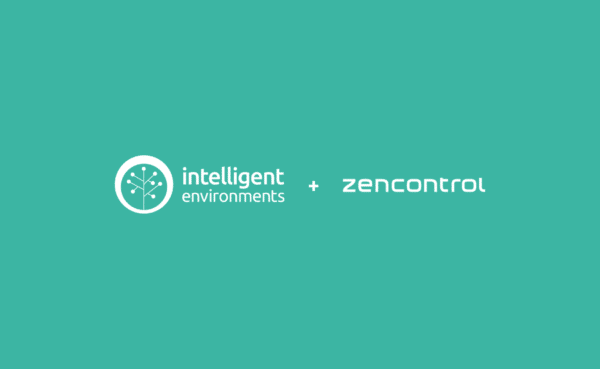DALI stands for “Digital Addressable Lighting Interface”. The information below provides an introduction to DALI, some information on the DALI protocol, and finally the more recent updated version – known as DALI-2.
 Introducing DALI
Introducing DALI
Originally DALI was developed to replace the basic, one-way operation of 0-10V analogue control of fluorescent ballasts and proprietary digital systems such as DSI. With DALI the system allows digital control, configuration and two-way communication. Although a broadcast option is still available, more importantly, each DALI device can be assigned a separate address allowing control of individual devices or grouping together to allow those ‘groups’ to be controlled independently or together.
This was a game-changer for lighting control, as it provides total flexibility to reconfigure lighting setups without any requirement to change the wiring. DALI lighting is a popular solution for consultants and clients alike, as changes in the use of internal space no longer require a complete ‘re-wire’. If offices change from open plan to partitioned, the lights can simply be re-programmed to suit. If racking in a warehouse is to be changed, lighting again can be re-programmed to suit the new alignment. More subtle changes in the way spaces are utilised can again be accommodated by adjustments to the programming.
Another important advantage DALI offers with its digital nature is the ability for two-way communication between devices. This means a device can report on its status for example, or report a failure. A big step forward towards providing automated monitoring and reporting for easier building maintenance and compliance.
For the electrical contractor installing the lighting, wiring is very simple. DALI power and data is carried by the same pair of wires, with no need for a separate bus cable. The polarity of the wires does not have to be observed. Read more regarding DALI rules for installation.
DiiA – Digital Illumination Interface Alliance
 The DiiA is a global industry alliance for DALI®. There are over 200 members worldwide. A company must be a member in order to get their products registered or certified. Membership allows the use of the DALI trademarks – see image:
The DiiA is a global industry alliance for DALI®. There are over 200 members worldwide. A company must be a member in order to get their products registered or certified. Membership allows the use of the DALI trademarks – see image:
Currently, there are:
– More than 750 DALI-2 certified products;
– Over 1,250 DALI version-1 registered products.
DALI is an industry-standardized protocol. It is specified in the multi-part international standard IEC 62386, as well as by new specifications written by DiiA.
Registration of all DALI devices has been compulsory since June 2018 and now all DALI-2 products can be viewed on the DiiA website on their product database
DALI-2
The DALI protocol was drafted initially over twenty years ago and has undergone a number of revisions as it’s evolved. These revisions have resulted in the release of a second version of the DALI standard IEC 62386, known as DALI-2.
DALI-2 addresses gaps in the original standard thus providing significant improvements in interoperability. DALI-2 also adds new features such as input and other control devices, while maintaining backwards compatibility.
In the past, some manufacturers have been guilty of implementing only parts of the DALI protocol. The DiiA independent testing and certification of DALI 2 products will ensure the protocol is adopted in its entirety.
 The DiiA product database provides total transparency. It lists all products genuinely certified DALI-2. This will hopefully ensure that lighting specifiers no longer propose products that present as DALI, but have never been tested and certified as compliant. As lighting control specialists, the only problems we’ve ever had with programming ‘DALI’, have been when devices connected to the system have not been genuine DALI certified products.
The DiiA product database provides total transparency. It lists all products genuinely certified DALI-2. This will hopefully ensure that lighting specifiers no longer propose products that present as DALI, but have never been tested and certified as compliant. As lighting control specialists, the only problems we’ve ever had with programming ‘DALI’, have been when devices connected to the system have not been genuine DALI certified products.
Intelligent Environments ensure the lighting control components we propose are DALI-2 certified. However other parties supply the light fittings and drivers. Anyone specifying or supplying product for a DALI system should verify that all products are DALI certified (or at least registered under DALI version 1). It is not good enough to accept an importer’s or manufacturer’s statement that their product is DALI compatible. If it has not been properly tested and certified it cannot be guaranteed to work appropriately within a DALI system, and the entire control system may be compromised.
New Lighting Control Standard
DALI-2 is the new (and at time of writing the ONLY) lighting control standard for Australia and New Zealand. It was adopted in November 2020.
With the adoption of this Australian/New Zealand standard, compliant systems will no longer have a proprietary lighting control wired bus, or proprietary wireless protocols. The DALI-2 standard defines an open DALI-2 bus, and DALI-2 wireless protocol where certified DALI-2 multi-vendor sensors and switches can communicate to a control system in both a wired and wireless manner. (Read More)


